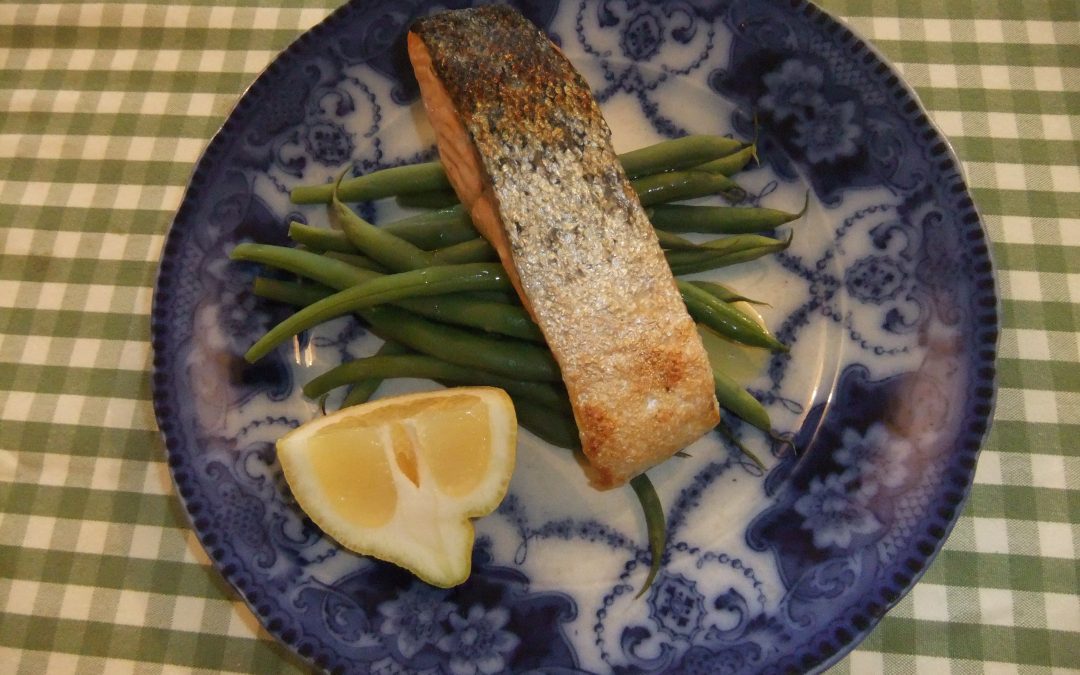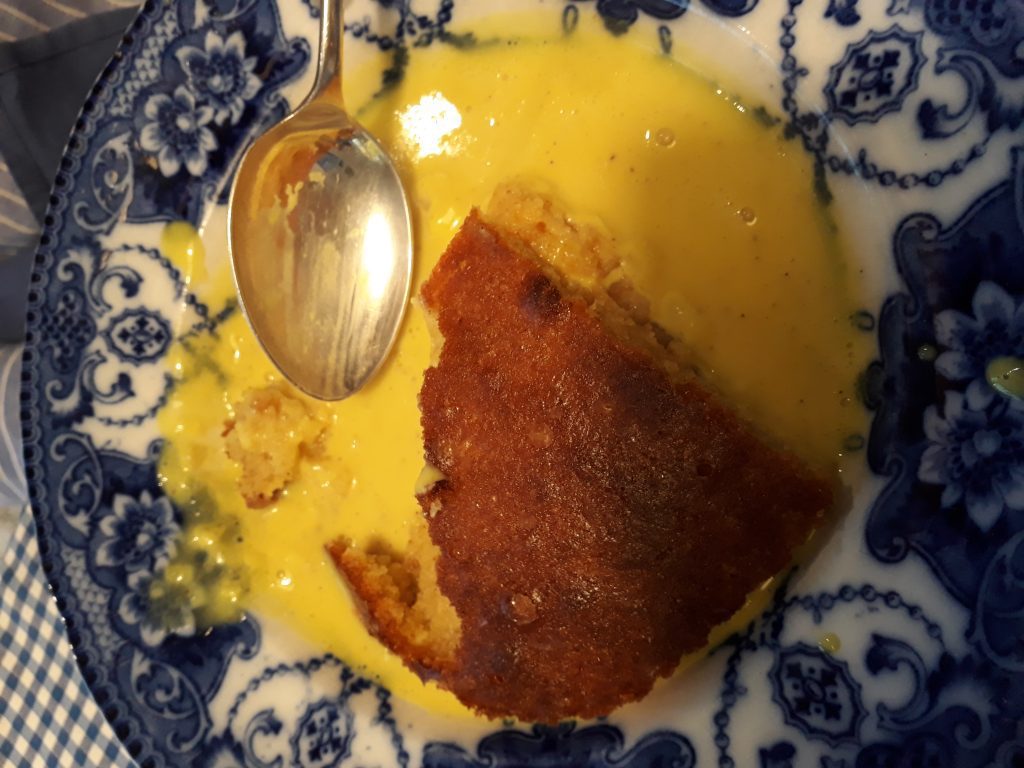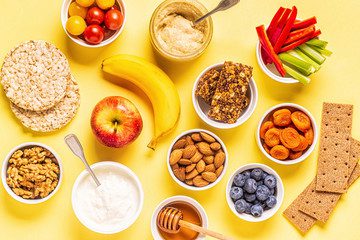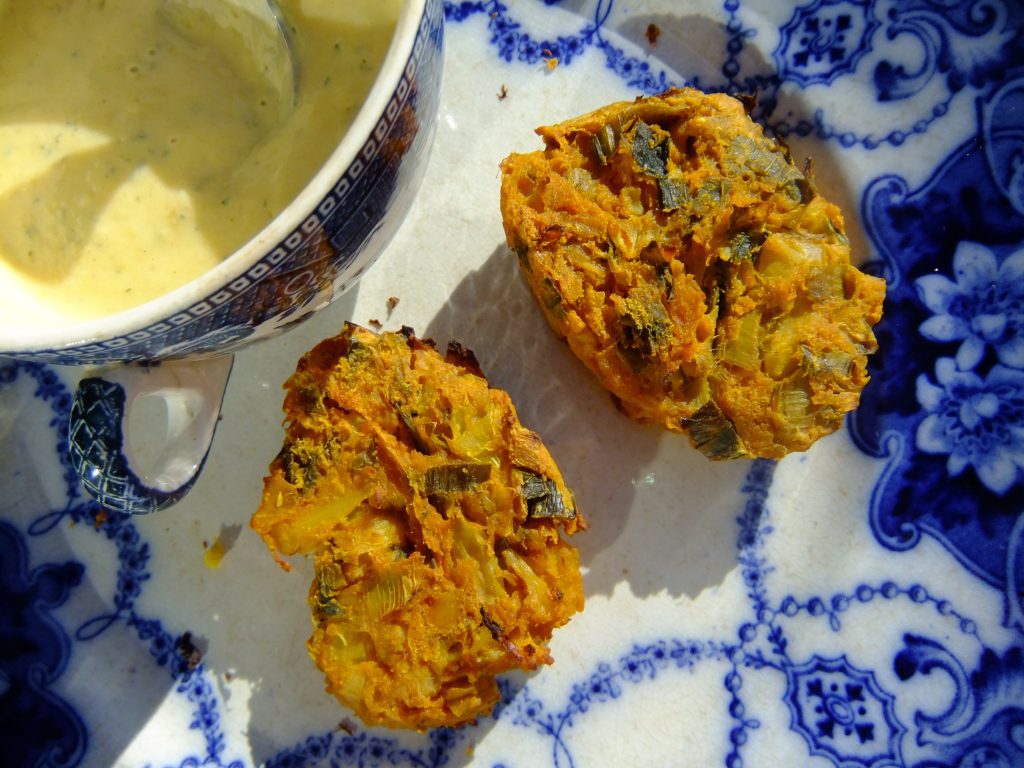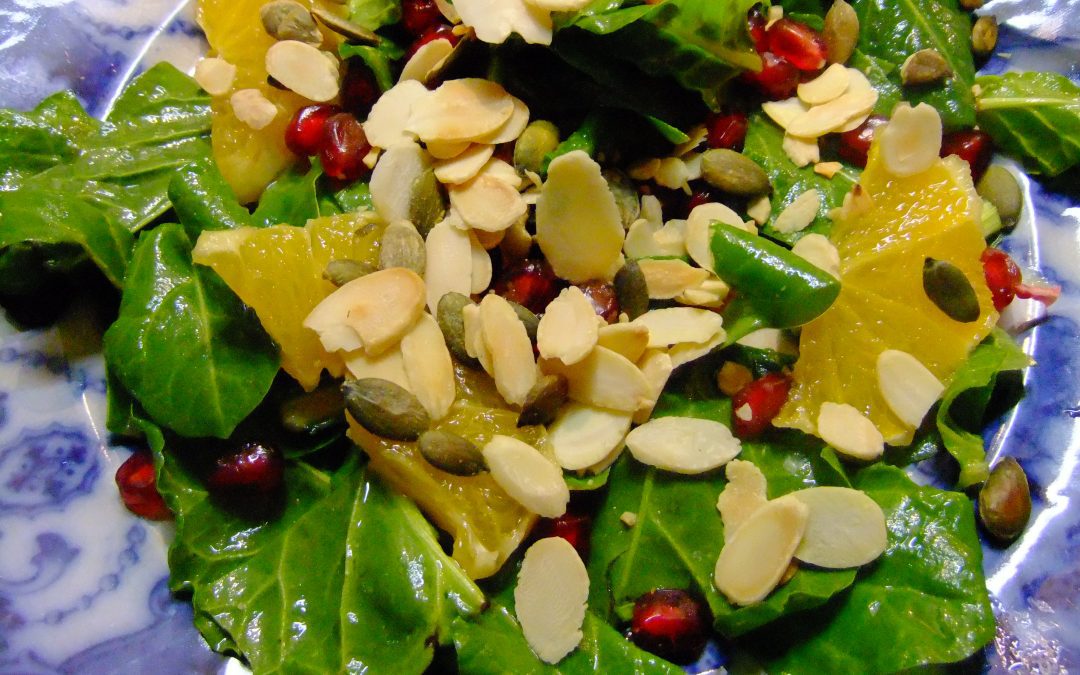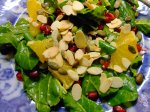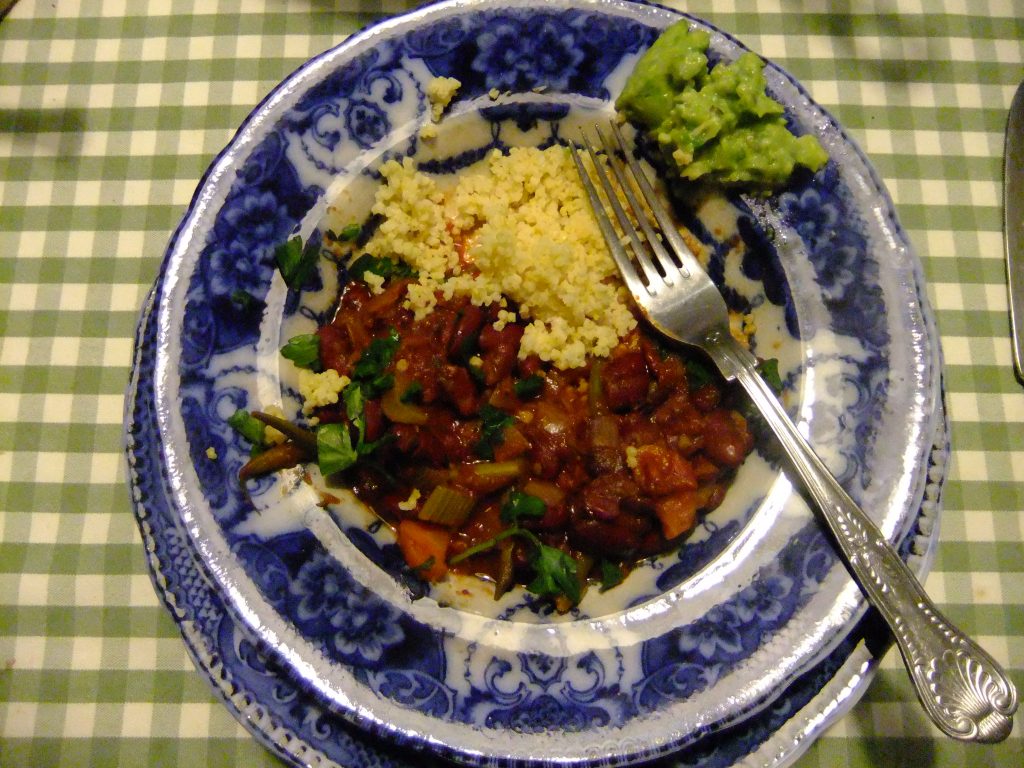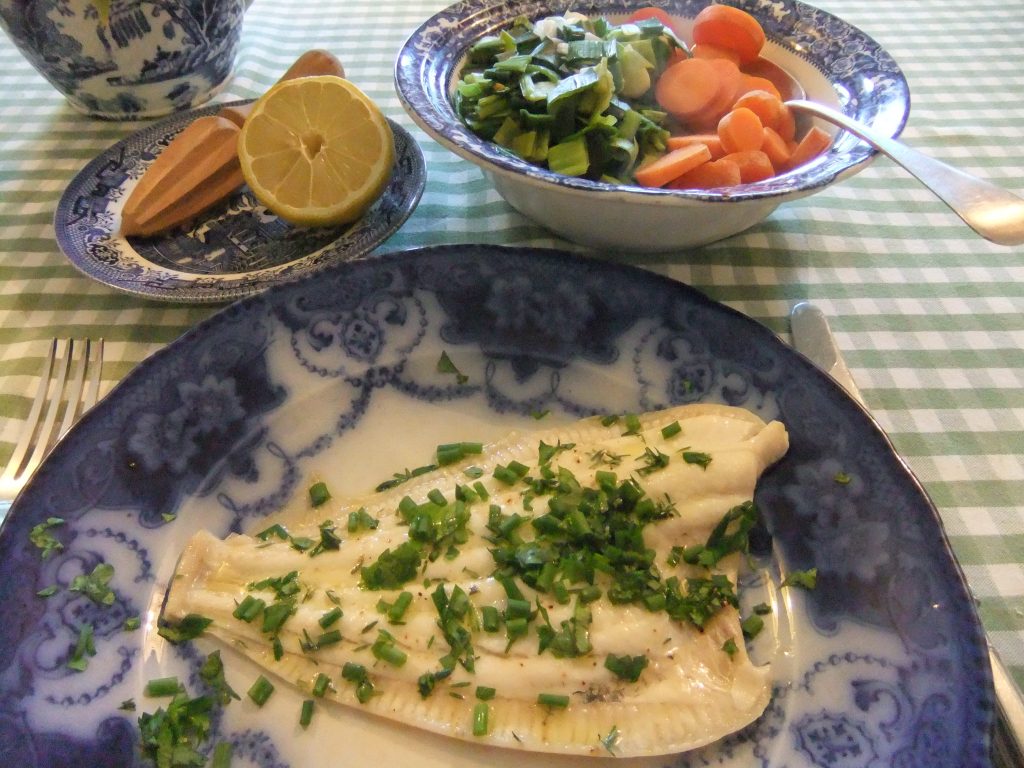
Aug 9, 2019 | Anna's Best Recipes, Sides, starters, soups & snacks
This is a delicious way to enjoy cauliflower. I use my Middle Eastern tahini sauce as a dressing but you could also dress with extra virgin olive oil, lemon juice and some paprika/smoked paprika. If you like, add some chopped fresh oregano or flat leaf parsley when the salad has cooled. The tahini sauce is also lovely used as a sauce over some simple poached/grilled fish, or as a dip with vegetable sticks. Keeps well in an airtight jar for several days. I like to make the dressing a bit in advance, to let the flavours develop. Eat it warm or cold – it’s all good.
For the salad:
1 medium cauliflower, leaves removed
2 tbs extra virgin olive oil
1 dsp sumac
Freshly ground black pepper
Himalayan/sea salt
2 large handfuls (about 250g) green beans (or runner beans)
For the dressing:
1 rounded tbs light tahini
2 tbs lemon juice and about 125ml cold water OR 150ml home made kefir (lemon juice OR kefir gives the sauce acidity and balance)
1-2 cloves garlic, crushed
1. Preheat oven to 200C/185C fan
2. Placing the whole cauliflower with stalk downwards, cut in half, and cut out the big central stalk. Then slice each half in slices approximately 1.5cm thick. Slicing (rather than breaking into florets) helps the cauliflower to caramelize deliciously.
3. Place in an ovenproof roasting dish, drizzle with olive oil, sprinkle over the sumac, a good pinch of salt and lots of black pepper and mix gently to coat everything evenly.
4. Roast for 20-25 minutes until you can pierce easily with a fork.
5. While the cauli is roasting, boil the kettle. Steam the green/runner beans until they are slightly softened but retain some crunch. Drain and refresh in cold water. This stops the cooking process. Once cooled, drain.
6. Make the tahini sauce. Whisk or blitz together in a mini food processor all the sauce ingredients. You are aiming for a consistency about the texture of double cream. You may need to add more water as you go to achieve this. The tahini will clump initially. Just keep mixing, and adding more liquid if needed.
7. When cauliflower is cooked so a fork pierces it easily, empty it and the green beans, into a serving dish and drizzle with the sauce.
Why this is good for you;
Cauliflower is a sulphurophane vegetable. This means that (like broccoli and cabbage) it is rich in sulphur which is crucial for detoxification. Detoxification affects every aspect of our health so if you want clear skin, good energy, mood and to keep clear of any health conditions, these sulphur rich veg are great to eat at least 3 times a week.
Garlic is also rich in sulphur and helps rebalance your gut bacteria in favour of useful micro organisms which ALSO aid detoxification. In fact over 70% of your detoxification is looked after by good gut bacteria – if you have enough quantity and variety of them!! Spices like sumac, paprika and black pepper, used to coat food, help reduce the toxic substances generated by roasting/heating food to high temperatures.
Spices (and herbs) also stimulate our body’s antioxidant defenses to keep us looking and feeling better for much, much longer. Kefir, especially when home-made, is a hypoallergenic milk product that’s really rich in over 30 species of beneficial micro organisms. Did you know that although many of these micro organisms dont survive the acid in our stomachs they still exert a beneficial effect. Research has shown that even heat-killed friendly bacteria do us good when we take them. Who knew! Of course we really also want to grow our own good bugs, which colonise and cling to the walls of our large intestine. There they ferment plant fibres (if we eat a big variety of plants) to make short chain fatty acids. Short chain fatty acids like butyrate are essential for daily repair of our gut. Get your gut health right and you have at least 90% of your health sorted.

Apr 23, 2019 | Anna's Best Recipes, Main courses
This recipe is super-easy. It’s what I make when I come home late and want dinner on the table in 15-20 minutes.
For 2
2 salmon darnes/fillets/steaks, ideally wild or organic
A large clove of garlic, peeled and crushed
Tamari Sauce (see “larder & shopping” for where to buy)
1. Brush fish on both sides with the sauce, smear with the garlic.
2. Grill on medium heat for around 5 minutes flesh side up and 1-2 minutes skin side up until very slightly browned (watch it when grilling the skin side, it goes from not done to burnt very quickly).
Serve with:
- Steamed green or runner beans drizzled with fresh lemon juice or a large salad of mixed leaves, cherry tomatoes and sliced red onion drizzled with my home-made mediterranean or Asian salad dressing or a little fresh lemon juice and a glug of extra virgin olive oil. These accompaniments are suitable for a paleo (stoneage) or ketogenic eating diet.
- If you don’t want to lose any weight you could also add a medium steamed or baked sweet potato (just scrub, slice and steam with the skin on for extra nutrients) or some baby boiled white potatoes. Carbohydrates (grains, potatoes, sweet foods) are weight gainers.
Why this recipe is good for you:
Oily fish is a great source of omega 3 essential fats needed for weight management, beautiful skin and good brain function. Eating fresh rather than tinned fish is best because the plastic lining of tins contains bisphenol A (BPA). Fats in the food absorb BPA. BPA is linked by numerous studies to sex hormone imbalance (eg PMS, low libido, endometriosis, fibroids) and life-threatening diseases of the breast and prostate. Greens are a rich source of magnesium, which helps the liver clear natural and man made toxins from the body. common symptoms of magnesium deficiency include stress, wheezing in asthmatics, and sluggish bowels.

Jan 9, 2019 | Anna's Best Recipes, Main courses

Mustard-baked mackerel
This is is a super simple recipe I concocted today, inspired by a Nigel Slater recipe. Its ideal for a one-person dinner, or for a family. The mustard and lime lift the richness of the oily fish and are amazing for you too.
For 2:
2 fresh mackerel fillets
1 dsp coarse grain mustard
1 dsp fresh lemon or lime juice
Generous pinch black pepper
Pinch Himalayan salt/sea salt
1/2 tsp dried tarragon if you have it
A little olive oil to grease your roasting tin
To serve:
2 cupfuls sliced carrots
4 cupfuls broccoli florets
1. Heat your oven to 200C and while it is heating steam your vegetables and keep warm.
2. In a little bowl mix the mustard, pepper, salt, citrus juice and (if using) tarragon.
3. Oil your roasting tin, lay the fish skin side down, slather with the mustard mix and bake for 12-15 minutes. When the fish is done, it will no longer be translucent and the point of a knife or skewer will go through it easily.
4. Enjoy.
Why this is good for you:
We all know that omega 3 oils from wild mackerel are great for our brains and hearts. But did you know that having enough omega 3 affects every cell in your body – from helping you avoid diabetes (or get rid of it if you have it), to helping your body react efficiently to all your horrnones. Eating more oily fish is a no-brainer. Mackerel is one of the best oily fish as its always wild so its leaner and cleaner. Mustard is a spice and is powerfully antioxidant. It even helps prevent eczema breakouts. If you want a healthy brain and body for many many years to come, get the spices in to your everyday eating. Spices AND herbs (like tarragon) pack a powerful antioxidant punch to lower inflammation and help you age agelessly. And they liven up your plate. What’s not to like!

Dec 20, 2017 | Anna's Best Recipes, Main courses
I was in a hurry last week and came up with this. Its super-fast on a weekday, provided you’ve already made up the Cajun spice mix (which only takes a couple of minutes). I’ve posted this mix already on the blog but its so good it deserves a reminder. I use it (when I remember) for grilling chicken fillets, salmon darnes and sometimes lamb chops. Rub the fish/meat with lemon juice first so the spice blend sticks on.
For 2:
2 hake fillets or darnes, about 160g each
Smoked paprika
Large bag of black kale (Cavolo nero) or curly kale
Sundried tomato paste, dairy-free red pesto (or if you are not dairy-free or on SC diet any good quality tomato pesto will do)
Fresh lemon juice (you will need about a teaspoon for the fish)
Extra virgin olive oil
Cajun spice mix:
You will need tinfoil and a roasting tin or dish
For the Cajun spice mix (store in an airtight glass jar away from heat and light)
½ level tsp chilli powder (omit or just use a pinch if you don’t like much heat)
1 level tsp Himalayan (pink) salt
½ tsp cayenne pepper
2 rounded tsp dried thyme
1 tbs each of:
Coarsely ground black pepper
Dried basil
Dried oregano
Ground coriander
Optional extra:
Cauliflower mash (see post) to serve
1. Turn on the oven to 200C.
2. Prepare the kale – wash, destalk and slice thinly. Boil your kettle and put the kale in your steamer over at least 2cm of boiling water. It can take quite a while to become tender.
3. While the kale is steaming, put the fish skin side down in an roasting dish with deep sides, rub the fish fillets with some lemon juice. Sprinkle Cajun mix and a good pinch of smoked paprika on each fillet until well coated.
4. Cover with tinfoil and give it 10 minutes in the preheated oven. After 10 minutes, test with a skewer to see if it is tender (this depends on the thickness of the fish). If not, give it another 5 minutes, covered again with the foil to stop the fish drying out.
5. Meanwhile, warm a vegetable dish for the kale. Into the dish put a generous heaped teaspoon of the pesto or paste, a dessertspoon of extra virgin olive oil and a good twist of black pepper if you have some. As soon as the kale is done to your liking toss with the pesto/paste to coat and keep warm.
6. Serve the fish on top of a pile of kale.
Optional extras:
Cauliflower mash (see blog post). This freezes well. I like to make a big batch then freeze leftovers in single portions. Reheat in a saucepan, stirring from time to time.
Why this is good for you
Herbs and spices are a powerhouse of vitality-boosting qualities. They protect the food during cooking from generating toxic inflammatory compounds (e.g. amines) while also protecting ourselves and our brains from accelerated ageing. Herbs and spices have hundreds of times stronger antioxidant properties than fruit and veg, weight for weight. Kale is a dark green leafy veg so its rich in magnesium and folic acid. We need both of these for making us more resilient to stress as well as for a healthy digestive system and good skin.

Aug 9, 2017 | Anna's Best Recipes, Desserts & drinks
This is one of my husband’s favourite desserts, as I discovered when I made it for him last weekend. This recipe is lovely and sweet but without the usual energy-sapping sugar and wheat flour. In fact its totally grain-free but you wouldn’t know it. The sponge is really good – light and moist which usually hard to achieve using grain-based gluten-free flours.
110g butter (or use clarified butter if you are sensitive to casein protein in milk or lactose in butter)
75g xylitol or erythritol
110g ground almonds
2 large beaten eggs
2 lbs cooking apples
30 drops stevia (liquid stevia available from health stores) mixed with 1 tbs water
A little extra butter/clarified butter for greasing
Oven temperature 185C (fan 170C)
- Peel, core and slice the apples. Cook them in a heavy bottomed saucepan, covered with a lid, with the stevia drops and water. Stir from time to time to prevent sticking. They should still maintain their sliced shapes.
- Cool thoroughly and put into a greased dish – a pyrex dish at least 18 x 18cm square works for me.
- Preheat oven to 170C.
- Beat the butter/clarified butter and xylitol until pale and fluffy. Slowly add beaten eggs then fold in the ground almonds and spread over the apple.
- Bake for around 40 mins. The top should be golden and a skewer inserted in the sponge should come out clean. We found it was very well done after 45 minutes even though the original recipe said to bake for an hour. If it is too coloured on top but not cooked inside, then cover the top with a flat baking sheet or a bit of tinfoil (with some holes in to let steam out) to prevent it getting too brown.
Why this is better for you:
The conventional apple sponge is filled with refined sugar and white flour which depletes your essential nutrients. Nutrients needed for supporting your immune system so that its neither underactive (infections) nor over-active (autoimmune conditions e.g. hypothyroidism, arthritis). Nutrients like zinc, vitamin C, B vitamins and magnesium are important for a healthy digestive system, skin and immunity. We all have different susceptibilities. In me a magnesium deficiency brought about by a refined diet might show as anxiety or insomnia. But in you it might manifest as frequent infections. Magnesium is important for hundreds of biochemical reactions in your body.

Mar 2, 2017 | Anna's Best Recipes, Sides, starters, soups & snacks
If you go for longer than 5 hours between meals you might sometimes need a snack. Most people who eat well balanced meals like on this blog don’t need to snack in-between and can fast for longer for extra health benefits. But here are some really easy snacks that give you carbohydrates (naturally sugar-containing foods like wholegrains or fruits) alongside protein/good fats (e.g. nuts, yoghurt, humous) for sustained slow-burn energy. Most of these foods are packed with nutrients to help you look and feel your best. Go for organic fruit and veg if you can – glyphosate residues on “conventional” produce kill beneficial bacteria and damage your gut. If you don’t have time for breakfast some of these snacks can fit the bill now and again if you include some fresh veg or fruit.
- 2 fresh apricots/plum + 4 walnut halves.
- Medium pear + 8 almonds.
- Medium apple + dessertspoon sunflower seeds.
- Nectarine or peach + dessertspoon pumpkin seeds.
- Apple + generous teaspoon almond butter straight from the jar.
- Handful carrot/cucumber sticks or red pepper strips + tablespoon humous.
- 1-2 Nairns rough oatcakes* (available in gluten-free also) + no-sugar peanut butter.
Note: The sweet Nairn’s oatcakes/biscuits have added sugar (not a vitality-boosting snack!).
1-2 oatcakes with generous topping of humous or lots of mashed avocado. - 1-2 oatcakes with thick tahini (ideally a raw brand e.g. Carly’s, from health shops).
- 1-2 oatcakes + cottage cheese and a sprinkle of black pepper.
- Mouthful leftover cooked chicken, smoked fish + an apple, mandarin or pear afterwards.
- Handful berries + 2-3 heaped tbs natural organic yoghurt.
- 2 fresh plums/apricots + 3 heaped tbs dairy-free “yoghurt” e.g. Coyo, Abbot Kinney’s Almond Starter, or unsweetened soya yoghurt.
- Small banana blitzed with 1 cup natural yoghurt/kefir + generous pinch of turmeric or cinnamon.
- For a treat try a Nakd bar from Tesco/health shops (=nuts + dried fruit).
- For another treat try 1-2 squares of 80% chocolate + dessertspoon sunflower seeds or 8-10 hazelnuts. Not too often though – 80% chocolate still contains added sugar.
Now you get the idea – a great snack is a portion of slow-release carbs (e.g. oats, whole fruit, carrot sticks) + high quality protein and/or good fats
Why these snacks are better for you
Carbohydrates are foods naturally high in sugars or with added sugars. Grains, root veg (potatoes, carrots) and almost all fruits are high in carbohydrates. Sugar, honey, fruit juice and white grains are even higher so aren’t a great choice in your regular diet. Carbs on their own (even from natural foods) give a quick rise in blood sugar that’s dangerous for your body. This promotes peaks and slumps in energy. But carbs combined with protein/good fats give you a better, longer-lasting slow-burn energy. Protein foods include meat, fish, beans, nuts, seeds, yoghurt, cheese, lentils and chickpeas. Great news if you want to look and feel your best for a long time to come.

Feb 17, 2017 | Anna's Best Recipes, Sides, starters, soups & snacks

Gluten-free baked cauliflower bahjis
I’ve been craving bhajis that are not deep-fried and finally got my wish with this lovely oven-baked recipe. This recipe is slightly adapted from one by Susanna Booth in the Guardian. Great for a buffet, finger food for a party, as a starter, or cold for a picnic. Everyone’s happy to eat it and take seconds. They
don’t need to know that its both gluten-and dairy-free! I like these just as much cold as hot.
NB some mango chutneys contain malt vinegar, which contains gluten, so read the label carefully before you buy.
Makes 15-20
For the bhajis
300g cauliflower
2 medium leeks, green and white parts
1 tbs olive oil (or, even better, virgin coconut oil)
100 gram (chickpea) flour
1 rounded tsp (teaspoon) ground turmeric
1 level tsp ground coriander
1 level tsp ground cumin
A pinch of Himalayan or Atlantic Sea Salt
80ml water
2 tsp mango chutney (make sure it’s a gluten-free one that does not contain malt vinegar) OR 2 rounded tsp St Dalfour or Follain no added sugar apricot jam and a pinch of ground ginger OR 2 tsp unsweetened mango puree (you can do this by blitzing the mango for the dip and reserving 2 tsp for the actual bahjis).
2 rounded tsp tomato puree
Olive oil (or even better, virgin coconut oil) for greasing the baking tin
For the dip
100g natural soya yoghurt (or natural yoghurt or thickened kefir for for milk-eaters)
Half a ripe mango
1 rounded tbs (tablespoon) mango chutney (again, make sure it’s gluten-free)
5 fresh large mint leaves
1. Preheat the oven to 180C. Wash and prepare the cauliflower and leeks. Dice the cauli into tiny pieces; cut the leeks lengthways and then into thin slices. Sweat all the veg in the olive oil in a heavy bottomed pan, covered with a lid, for 5-10 minutes until just softened.
2. Put the gram flour, spices and salt in a bowl. Add the water, chutney and tomato puree and mix to a smooth paste. Add the sweated vegetables and stir until everything is well coated. It will be very thick.
3. Drizzle a little olive oil over a taking tray. Rub with a spatula or brush to coat the whole surface.
4. Dollop the bhaji mix on the tray 1 tbsp at t time. Flatten them a little with the back of a spoon, spatula or fishslice.
5. Bake for 10-15 minutes until slightly browned. Take the tray from the oven, then flip each bhaji over using a fish slice. Bake for another 10-15 minutes until golden. You can eat them hot or cold.
6. Make the dip by blitzing the chutney, mango, mint and yoghurt together in a mini food processor or else use a bowl and stick blender. Refrigerate for up to a day before serving.
Variation:
I made an imitation mango chutney for this recipe by mixing a few things I had in the cupboard: 1 1/2 tbs St. Dalfour apricot jam, a pinch of onion salt, a large pinch of each of dried garlic and ground coriander and 1/2 teaspoon of distilled or wine vinegar.
Why this is better for you:
Gram (chickpea) flour is a good source of protein to help keep you feeling fuller for longer. Leeks are rich in inulin, which helps feed good gut bacteria. Good bacteria are important for all aspects of your health from weight management to clear skin and good digestion and absorption of nutrients. Because these bhajis are baked rather than deep fried which means they don’t toxic heated polyunsaturated oils. In cooking, coconut oil is even better for you then olive oil. This is because coconut oil is less damaged by heating then olive oil. coconut oil is rich in medium chain triglycerides, which can help boost energy because the body digests them very easily. Amazingly, coconut oil is used by your body directly to make energy rather then being stored as fat in your body. This makes it a better tool for weight management than many other oils. Herbs and spices such as turmeric, cumin and coriander have well-documented anti-inflammatory properties and a great health boost for anyone who cares about their health, fitness or skin.

Jan 5, 2017 | Anna's Best Recipes, Sides, starters, soups & snacks

Spinach pomegranate & orange salad
I stole this salad from a newspaper and adapted it to include some protein (flaked almonds) so you’re not just getting a huge blood sugar spike from all the fruit. This makes a lovely starter before a winter stew of some sort. Or else make a big platter of it for a buffet meal. The colours are stunning. Pomegranates are still in season in January (they start in November in Asian shops and good greengrocers). If you can’t get pomegranates then either increase the orange to a whole one or substitute a tablespoon of goji berries soaked overnight in clean water.
2 large handfuls baby spinach, washed and dried
1 tbs pumpkin seeds (for SC diet initial 12 weeks use almonds instead)
1 tbs flaked almonds
1/2 a small orange
A fresh pomegranate (you will use 1/4 to half of the seeds)
Dressing:
3 tbs virgin hazelnut or walnut oil (or use extra v. olive oil at a push)
Juice of 1 small orange
Freshly ground black pepper
Pinch of Himalayan/Atlantic Sea Salt
1. On a very low heat in a heavy bottomed pan, gently dry the pumpkin seeds and flaked almonds, until they seem dry and the pumpkin seeds are slightly swelled. It is better to eat nuts and seeds raw but this light toasting does make them super delicious. Remove from the heat as soon as they are slightly dried and crispy.
2. While this is happening, whack your whole pomegranate all over with a wooden spoon or a pestle for a few minutes. This loosens the seeds. Then cut it in half and pick out the ruby-coloured seeds.
3. Cut your orange in half across its equator, cut off the skin and pith with a sharp knife. Cut the remaining piece in half, then slice as thickly or as thinly as you feel like.
4. Mix your dressing in a screw top jar and shake to amalgamate.
5. Now put half the pomegranate seeds, the orange, spinach, and at least a tablespoon of dressing in a large bowl and toss until coated and glistening.
6. Divide between two plates, adding more pomegranate seeds if you think there’s not enough for your liking. Sprinkle over the almonds and pumpkin seeds. Enjoy…
Why this is good for you:
Spinach, like all dark green leafy veg, is rich in folic acid. Folic acid is important for your liver, helping keep your skin clear and healthy. Its also important for your mental health, helping reduce stress levels. Pomegranates are high in antioxidants and the raw, virgin cold-pressed oils are a good source of omega 6 oils and vitamin E for beautiful skin. Don’t forget to keep your virgin nut/seed oils in a cool dark place in an airtight bottle, so the delicate beneficial oils don’t get damaged. Pumpkin seeds are a rich source of methionine (and zinc) which helps clear heavy metals and other toxins from the body. Almonds are high in calcium and magnesium for good stress management and clear skin.

Nov 10, 2016 | Anna's Best Recipes, Main courses
I love to eat this when the weather gets cold and we want comfort food in the evening. This was a family favourite cooked by my mother for many years. Kids seem to like it though you might need to omit hot chilli and cayenne and use paprika instead. Make a large batch and store leftovers in the freezer for future ready-meals.
If you don’t like kidney beans then borlotti, cannellini or butterbeans will work just as well.
For 4:
225g (1 large mug) dried red kidney beans (or 2 tins sugar free kidney beans, drained and rinsed)
1250ml water for boiling (if using dried beans)
1-2 dsp extra virgin olive oil
225g/1 very large onion, finely or roughly chopped
2 large cloves garlic, crushed
450g mixed veg, chopped (eg. red/green peppers, carrot, celery, turnip, runner beans, green beans, courgettes)
Heaped tsp dried basil
Rounded tsp ground cumin
½ tsp cayenne pepper
½ tsp chilli powder (optional – avoid if you don’t like hot spices)
400-500g passata (sieved tomatoes) OR a 400g can tomatoes, liquidized/mashed
2 tbsp tomato puree
3 tbsp red wine (optional)
Stock (liquid reserved from cooking the beans) or water
Juice of ½ lemon (optional)
Freshly ground black pepper and Himalayan or Atlantic sea salt
1. If using dried beans: Soak the beans overnight in filtered water, drain and rinse well. Bring to the boil in fresh water and boil fast for at least 10 mins so any protease-inhibitors are destroyed (you can give yourself an awful cramp and tummy upset if you don’t do this when cooking beans). Then cover the pot and simmer for a further 35-40 mins or until the beans are soft – cooking time varies. If you find the water tends to boil over, it helps to add a teaspoon of olive oil. When the beans are soft, drain and reserve the stock for use later.
2. Put the onion and garlic in a large heavy bottomed saucepan with 1 tbs olive oil and 1 tbs of water, cover with a lid and sweat for a few minutes until translucent. Then add the chopped vegetables, beans (if using tinned, do not add till later), basil and spices. Stir well, then cover and sweat (on low heat) 5 mins
3. Next add tomatoes/passata, tomato puree, red wine and 1/4 pint of the stock/water.
4. Bring the mixture to the boil, cover and simmer for 20 mins until the veg are softened.
5. Add the lemon juice and seasonings, tinned beans (rinse well first)or cooked beans. Increase the stock level if you like your casseroles fairly liquid then cook for a further 10-15 mins until the vegetables are tender.
Serve with:
- A green salad or steamed broccoli.
- Some cooked quinoa, millet or brown rice is nice with this (but avoid all of those if you are on the SC diet!). The quinoa in particular, with its 11% protein, will keep you fuller longer. If you are on the SC diet, just put a few more carrots and turnip or celeriac in the casserole for extra carbs.
- My one minute guacamole: mash a ripe avocado or two with a pinch of Himalayan or Atlantic sea salt. Add fresh lime juice to taste (one lime is usually enough for two small avocados) and if you like, a pinch of chilli or a chopped red chilli.
Why this is good for you:
Taking a break from meat and having vegetable protein instead provides food for your good gut bacteria. Maybe that is part of the reason why a semi-vegetarian diet helps people live longer. Herbs and spices all have medicinal qualities as they encourage antioxidant activity in our body – good news for reducing inflammation, helping your skin and your intestines. They also help suppress disease-causing bacteria in your gut while encouraging the growth of helpful species.

Oct 27, 2016 | Anna's Best Recipes, Main courses
This is another really quick dinner for when you don’t have a lot of time or inclination to cook. I never really liked flat fish much before seeing how Nigel Slater cooked it in his book, “Real Fast food”. Use plaice, sole or lemon sole, which will take a bit longer as it’s more robust. The same treatment is also lovely for fancy flat fish such as turbot or halibut, you will just need to cook the whole fish for longer, possibly in the oven.
The herbs aren’t crucial but they give massive health benefits (anti-inflammatory, gut-bacteria balancing, angi-ageing – the list is endless).
For 2:
2 sole or plaice fillets, about 160g each
Extra virgin olive oil – couple of teaspoons
About 1 dsp fresh thyme leaves
Optional: 3 heaped dsp chopped fresh/frozen parsley or scissor-snipped chives, or a mix of both.
A fresh lemon half, to squeeze over
Freshly ground black pepper
To serve: 6 cups steamed veg e.g. broccoli or runner/green beans OR 4 cups of greens and 2 cups steamed carrots or (not suitable for SC Diet) steamed slices of sweet potato. The orange veg give you more nutrients than in white potatoes.
1. Put your veggies in the steamer and keep warm when cooked.
2. Heat your grill to medium.
3. Brush a baking sheet or the shiny side of a large piece of tinfoil with a little olive oil and place on your grill rack, laying the fish, skin side down, on top.
4. Smear or brush the fish with the olive oil and sprinkle over the thyme leaves and a few good grinds of black pepper.
5. Grill till tender and opaque, about 5 mins. It’s done when the point of a knife goes through the fish like a hot knife through butter. The baking sheet/tinfoil helps cook the underside of the fish so you won’t need to turn it at all.
6. Manhandle the fish onto warmed plates using a fish-slice or spatula, and scatter over the parsley and/or chives.
7. Serve with the veg and a drizzle of extra virgin olive oil and hand around the lemon to squeeze over.
Variation:
You could use a small knob of butter, melted gently and brushed on, instead of the olive oil, if you want to, provided you don’t need a 100% dairy-free diet.
Why this is good for you:
White fish is a source of high quality protein that’s low in saturated fats. Herbs, especially fresh thyme, are a rich source of antioxidants that help lower inflammation in the skin (eg eczema), arteries (heart disease), and digestive system (eg. colitis, gastritis). Extra virgin olive oil, especially when eaten raw, is a great way to bump up your intake of vitamin E. Vitamin E moisturizes your skin from within. This vitamin also helps keep the blood thin, assisting circulation to the brain, hands and feet. Vitamin E has also been shown to play a part in dampening down an over-active immune system (e.g. allergies, auto-immune diseases).


